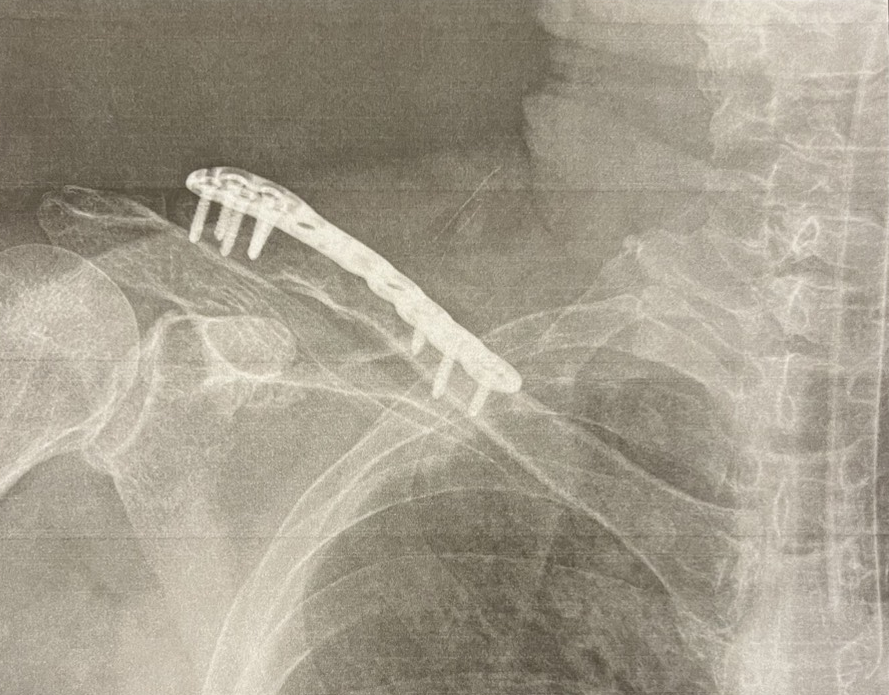「イギリス国王がバチカンでローマ教皇と礼拝」というニュースを知った時は、かなり不意を突かれた感じでした。
When I heard that the King of England had attended a worship service with the Pope at the Vatican, I was genuinely taken aback.
英国のチャールズ国王とカミラ王妃は23日、訪問先のバチカンでローマ教皇レオ14世と面会し、合同の礼拝に臨んだそうです。英国国教会が16世紀にカトリック教会から分離して以降、初めてとのことです。
King Charles III and Queen Camilla of the United Kingdom reportedly met Pope Leo XIV during their visit to the Vatican on the 23rd and attended a joint worship service. It is said to be the first such event since the Church of England split from the Catholic Church in the 16th century.
これを例えるなら、「犬派」と「猫派」で対立していた人間が、それぞれ相手側のペットを抱えて一緒に写真に映る、というくらいの、歴史的なニュースと言えます。
It’s as if lifelong rivals from the “dog lovers” and “cat lovers” camps suddenly took a group photo, each holding the other’s pet — a truly historic moment.
私としては、「ハマスの幹部がエルサレムの嘆きの壁の前で祈る場面」と同程度の――いや、それは言い過ぎですが――結構な驚きです。
For me, it’s about as shocking as imagining a Hamas leader praying before the Wailing Wall in Jerusalem? Well, perhaps that’s an exaggeration, but still quite astonishing.
-----
カトリックとプロテスタントが、この600年近くの間、どれほどの血を流してきたか――とここまで書いて、実際にどれくらいの血が流れたのだろうと思い、ChatGPTに定量化してもらいました。
The Catholics and Protestants have shed an unimaginable amount of blood over nearly six centuries. I began to wonder just how much, and so I asked ChatGPT to quantify it.
フェルミ推定:「カトリック vs プロテスタント」で流れた血液量(象徴値)
Fermi Estimation: The Symbolic Amount of Bloodshed in “Catholics vs. Protestants”
前提:宗教対立を主因または重要因とする主要紛争の死者数をベースに、「1人あたり平均血液量=5 L」を掛けるという、あくまで象徴的で粗い推定です(多くは戦闘外死〈疫病・飢餓〉であり、実際に“流出”した血液ではありません)。
Premise: This is a rough, symbolic estimate based on the number of deaths in major conflicts where religious confrontation was a primary or significant cause, multiplied by an average of 5 liters of blood per person (many deaths were non-combat-related — disease, famine — and did not literally “spill blood”).
1) 対象と死者数(代表例)
1) Target Conflicts and Estimated Deaths (Representative Examples)
三十年戦争(1618-48):約450万-800万人 → 中央値600万人。宗教要因は重要だが大国間競争も大。ここでは「宗教起因寄与率」50%と仮置き → 有効死者300万人。
Thirty Years’ War (1618-48): Approx. 4.5-8 million deaths → median 6 million. Religion was a significant but not sole factor; assume 50% attributable to religious causes → 3 million effective deaths.
フランス宗教戦争(1562-98):約200万-400万人 → 中央値300万人。宗教対立が主軸と解されるため寄与率70% → 210万人。
French Wars of Religion (1562-98): Approx. 2-4 million deaths → median 3 million. Religion was the primary cause; assume 70% attribution → 2.1 million deaths.
イングランド内戦(三王国戦争、17世紀):総死者約19万-20万人。宗教・王権・議会が絡むため寄与率50% → 10万人。
English Civil War (Wars of the Three Kingdoms, 17th century): About 190,000-200,000 deaths. With religion, monarchy, and parliament all intertwined, assume 50% attribution → 100,000 deaths.
オランダ独立戦争(八十年戦争):死者概算10万-50万人 → 中央値30万人。宗教+独立要因の折衷で寄与率50% → 15万人。
Dutch War of Independence (Eighty Years’ War): Roughly 100,000-500,000 deaths → median 300,000. With mixed religious and political causes, assume 50% attribution → 150,000 deaths.
北アイルランド紛争(1960年代-1998):死者約3,500人。宗派アイデンティティ要素は大きいが政治・民族も絡むため寄与率50% → 約1,700人。
Northern Ireland Conflict (1960s-1998): Around 3,500 deaths. Religion was a key identity factor but political and ethnic issues also involved; assume 50% attribution → about 1,700 deaths.
合計(宗教起因寄与分の便宜的合算):約5,351,700人 ≒ 535万人(概数)
Total (convenient sum of religion-related portions): approx. 5,351,700 ≒ 5.35 million people.
2) 「血液量」への換算
2) Conversion into “Blood Volume”
1人あたり5 L × 535万人 ≒ 約2,680万リットル(= 約26,800 m3)。
5 L per person × 5.35 million people ? 26.8 million liters (= approx. 26,800 cubic meters).
オリンピック規格プール(50×25×2 m ≒ 2,500 m3)に換算すると、約11プール分。
Converted to Olympic-size swimming pools (50×25×2 m ≒ 2,500 m3), that’s about 11 pools full.
-----
まあ、こんな計算に意味があるとは私も思ってはいませんが、同じ教祖と教義を持つ宗教における「内ゲバ」の損害としては、歴史的にシャレにならないものだと思います。――まあ、もっとも双方とも「相手が間違っている(悪魔である)」と言い合っているという点では、どの内ゲバでも同じですが。
I don’t really think this kind of calculation has any real meaning. Still, as intra-religious bloodshed among believers of the same prophet and doctrine, the scale of damage is historically absurd. Still, since both sides claimed the other was “wrong (or demonic),” it’s just another classic case of internal strife.
-----
この話を聞いて私が真っ先に思い出したのが、「アレ」です――出雲大社 vs. 天皇家。
This story immediately reminded me of “that one,” the conflict between the Izumo Grand Shrine and the Imperial Family.
実は、出雲大社というのは、日本神話における“元祖・支配者”の神、つまり「前政権」です。その後、天照大神(現政権)が「ここからはウチが治めるんで」と言って国を譲らせた、いわば「出雲=旧王朝」「天皇家=新王朝」。
In fact, the Izumo Shrine represents the “original ruler” deity in Japanese mythology, the former regime. Later, Amaterasu, the sun goddess, said, “From here on, we’ll rule this land,” and the sovereignty was ceded. In short, Izumo is the old dynasty, and the Imperial Family is the new one.
この二つの勢力、表向きは和解していますが、心の奥底では「譲った側」と「奪った側」。そりゃ、ちょっとした気まずさも残ります。
On the surface, the two forces have reconciled, but deep down, they remain “the giver” and “the taker.” No wonder a trace of awkwardness lingers.
で、その気まずさがどれくらい長く続いたかというと――なんと、約1,500年間(※江端による概算)にわたって、天皇陛下は出雲大社の本殿に一歩も入れなかった、という話があるほどです。
And how long did that awkwardness last? Reportedly about 1,500 years (by Ebata’s estimate), during which no Emperor ever set foot inside Izumo Shrine’s main sanctuary.
理由は単純で、「入ると立場が逆転する」からです。なにしろ、あそこは“譲られた国の旧オーナー”の神殿です。いわば、M&A後に前社長の執務室に後任社長が足を踏み入れられないようなもの。形式上は「謙譲の美徳」ですが、どう見ても“空気の読み合い”です。
The reason is simple: entering would invert the hierarchy. After all, that shrine belongs to the “former owner” of the nation. It’s like a new CEO hesitating to enter the former president’s office after an M&A. Officially it’s called “modesty,” but really it’s all about reading the room.
そしてこの微妙な関係、なんと令和に入ってようやく和らぎました。2014年に皇族の典子女王が出雲大社の千家国麿氏とご結婚されたのです――つまり、「現政権のプリンセスが旧王朝のプリンスと政略結婚」という、まるで大河ドラマのような展開です。
And remarkably, this delicate relationship only softened in the Reiwa era. In 2014, Princess Noriko of the Imperial Family married Kunimaro Senge of the Izumo Shrine family?essentially, “the princess of the current regime marries the prince of the old dynasty,” straight out of a historical drama.
これにより、神話レベルで1,500年続いた気まずさが、「結婚による和解」でついに解消されたわけです。
Thus, a 1,500-year-old mythological awkwardness was finally resolved through marriage.
こうなると、チャールズ国王とローマ教皇の共同礼拝なんて、「犬派と猫派が一緒に動物愛護ポスターに出た」どころではありません。むしろ、「織田信長と本願寺顕如が仲良くヨガ教室に通い始めた」くらいの驚きです。
Compared to that, the joint worship of King Charles and the Pope is nothing?it’s like imagining Oda Nobunaga and Honganji Kennyo happily attending a yoga class together.
-----
歴史というのは、血を流して争った相手と、結局は“同じ神殿で祈る日”が来る――そう考えると、宗教も政治も、最終的には「親戚づきあい」みたいなものなのかもしれません。
History, it seems, always brings former enemies, those who once shed each other’s blood, back together to pray in the same sanctuary. In that sense, both religion and politics may ultimately be just forms of extended family relations.
まあ、楽観的に過ぎるかもしれませんけどね。
Well, perhaps that’s a bit too optimistic.


